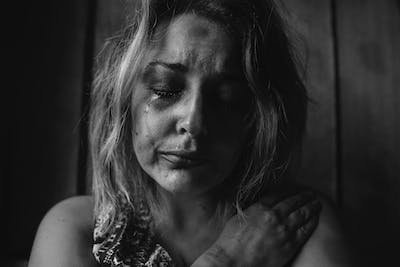People have been talking about mental health for as long as people have been talking. In fact, the word “mental” has been around for quite a while. The first recorded use of the word “mental” dates back to 1206 in England, and that is still the earliest record we have of it in American literature.
Even before then, mental illness was acknowledged in other cultures around the world. It’s not something that just developed in the 20th century; depression is an established part of human psychology and culture going back thousands of years. Modern culture has made it even more acceptable to talk about mental health than it was even a few decades ago.
The push toward recognizing and accepting mental health problems has come from various places: medical, social and political. So how do you know if you or someone you care about might be suffering from depression? What kinds are there, and how can you tell the difference between depression and something else? Today I will be going deeper in breaking it down
La gente lleva hablando de salud mental desde que existe el ser humano. De hecho, la palabra "mental" existe desde hace bastante tiempo. El primer uso registrado de la palabra "mental" se remonta a 1206 en Inglaterra, y sigue siendo el registro más antiguo que tenemos de ella en la literatura estadounidense.
Incluso antes de esa fecha, las enfermedades mentales estaban reconocidas en otras culturas de todo el mundo. No es algo que surgiera en el siglo XX; la depresión forma parte de la psicología y la cultura humanas desde hace miles de años. La cultura moderna ha hecho que hablar de salud mental sea aún más aceptable que hace unas décadas.
El impulso hacia el reconocimiento y la aceptación de los problemas de salud mental procede de diversos ámbitos: médico, social y político. Entonces, ¿cómo saber si usted o un ser querido puede estar sufriendo depresión? ¿Qué tipos hay y cómo diferenciar una depresión de otra cosa? Hoy profundizaré en el desglose

As we’ve already discussed, depression is a condition that feels like sadness but isn’t actually happy. The feeling can range from mild sadness to a depression that feels as if your world has been completely turned topsy-turvy. Depression can be described as a feeling of sadness or worthlessness, coupled with “the blues,” which are feelings of frustration, hopelessness, and worthlessness.
It can also be described as a blues-like state of low mood that occurs due to a number of factors, including stress and a lack of affection and support from friends, family, and other important people in one’s life. There are many different types of depression, and the best way to identify which type you might be suffering from is by talking to a qualified health professional.
Unfortunately, the “how” of depression is often misunderstood. Many people assume that if they feel a certain way, then they have to go to a doctor and get a diagnosis of depression. But this is actually very unlikely to happen in most cases, as the initial stages of depression are often subtle and people may not feel like talking to a doctor about it. People who are depressed often have “lighter” moods in the day-to-day, even when they’re under significant stress. But as the stress levels rise and the “blues” set in, a person’s mood darkens and he or she may begin to show signs of depression, such as tearfulness, reduced interest in social situations, and a lack of appetite.
It can be really difficult to talk to a friend or loved ones about feelings because they might worry or feel uncomfortable. So, if you’re interested in talking, but aren’t sure who to begin with, here are a few situations where you might want to start:
You’re feeling down and want to know why
You’ve tried talking to a friend or family member about it but they don’t seem to get it
you feel like talking to a health professional, but are afraid to broach the topic with a doctor
You’re in a situation where you don’t feel comfortable talking to a friend or family member
- You’re in a negative emotional state and want someone to talk to
Like men, women can also experience symptoms of depression. However, the following conditions are more likely to appear in a woman than in a man:
Depression and anxiety are often inter-related
Women are more likely to develop a deeper depression as they age
Bipolar I disorder is more prevalent in women
Alcohol and drug abuse are more frequent in women
Weight gain and an increased appetite are more commonly seen in women
Physical changes such as Changes in bed-hugging or appetite
Social changes including isolating behavior, withdrawal from social situations, and lack of interest in usual activities
Sleep issues, including insomnia, being awake at night, and having difficulty falling asleep
Como ya hemos dicho, la depresión es una afección que se siente como tristeza, pero que en realidad no es felicidad. El sentimiento puede variar desde una tristeza leve a una depresión que se siente como si su mundo se ha vuelto completamente patas arriba. La depresión puede describirse como un sentimiento de tristeza o inutilidad, junto con "la melancolía", que son sentimientos de frustración, desesperanza e inutilidad.
También puede describirse como un estado de ánimo depresivo que se produce debido a una serie de factores, como el estrés y la falta de afecto y apoyo de amigos, familiares y otras personas importantes en la vida de una persona. Hay muchos tipos diferentes de depresión, y la mejor manera de identificar el tipo que puede estar padeciendo es hablar con un profesional sanitario cualificado.
Por desgracia, a menudo se malinterpreta el "cómo" de la depresión. Muchas personas suponen que si se sienten de cierta manera, tienen que ir al médico y que les diagnostique una depresión. Pero en realidad es muy poco probable que esto ocurra en la mayoría de los casos, ya que las fases iniciales de la depresión suelen ser sutiles y la gente puede no tener ganas de hablar de ello con un médico. Las personas deprimidas suelen tener un estado de ánimo más "ligero" en el día a día, incluso cuando están sometidas a un estrés importante. Pero a medida que aumentan los niveles de estrés y aparece la "melancolía", el estado de ánimo de la persona se oscurece y puede empezar a mostrar signos de depresión, como llanto, menor interés por las situaciones sociales y falta de apetito.
Puede ser muy difícil hablar de los sentimientos con un amigo o un ser querido porque pueden preocuparse o sentirse incómodos. Así que, si te interesa hablar, pero no estás seguro de con quién empezar, aquí tienes algunas situaciones por las que podrías empezar:
Te sientes mal y quieres saber por qué.
Has intentado hablar de ello con un amigo o familiar, pero parece que no lo entienden.
te apetece hablar con un profesional sanitario, pero te da miedo abordar el tema con un médico
Te encuentras en una situación en la que no te sientes cómodo hablando con un amigo o familiar
- Te encuentras en un estado emocional negativo y quieres hablar con alguien.
Al igual que los hombres, las mujeres también pueden experimentar síntomas de depresión. Sin embargo, es más probable que aparezcan en una mujer que en un hombre:
La depresión y la ansiedad suelen estar interrelacionadas
Las mujeres son más propensas a desarrollar una depresión más profunda a medida que envejecen
El trastorno bipolar I es más frecuente en las mujeres
El abuso de alcohol y drogas es más frecuente en las mujeres
El aumento de peso y de apetito es más frecuente en las mujeres.
Cambios físicos como cambios en el hábito de acostarse o en el apetito
Cambios sociales como comportamiento de aislamiento, retraimiento de las situaciones sociales y falta de interés por las actividades habituales
Problemas de sueño, como insomnio, vigilia nocturna y dificultad para conciliar el sueño.

People who are close to someone who is depressed may not be able to tell the difference between the two emotions. This can be a huge problem, as depression can tend to be much more incapacitating than anger. If you think you or someone you love might be experiencing depression, you should seek immediate medical help.
But even if you’re not sure, you can use the following tips to help identify the difference between depression and anger:
Feeling down or a lack of energy is different from being angry
Tapping into your strengths can help you identify what you’re feeling rather than focusing on the negative feelings
Pacing yourself is another way to distinguish between the two emotions
Regardless of what you’re experiencing in your life, it’s important to get help for it as soon as possible. Talking to someone about it can help you sort out your thoughts and feelings and get a clearer picture of what’s going on in your life. And if you need to talk to someone about it sooner rather than later, it’s best to approach the conversation with a open mind and heart.
Don’t be afraid to ask for help with anything that’s bothering you. You’re worth it, and you’re worth it in the end.
Las personas cercanas a alguien deprimido pueden no ser capaces de distinguir entre ambas emociones. Esto puede ser un gran problema, ya que la depresión tiende a ser mucho más incapacitante que la ira. Si cree que usted o un ser querido puede estar sufriendo una depresión, debe buscar ayuda médica de inmediato.
Pero incluso si no está seguro, puede utilizar los siguientes consejos para ayudar a identificar la diferencia entre la depresión y la ira:
Sentirse decaído o con falta de energía no es lo mismo que estar enfadado.
Aprovechar tus puntos fuertes puede ayudarte a identificar lo que sientes en lugar de centrarte en los sentimientos negativos.
Otra forma de distinguir entre ambas emociones es marcarse un ritmo.
Independientemente de lo que estés experimentando en tu vida, es importante que busques ayuda lo antes posible. Hablar con alguien sobre ello puede ayudarte a ordenar tus pensamientos y sentimientos y a tener una idea más clara de lo que está pasando en tu vida. Y si necesitas hablar con alguien sobre ello cuanto antes, lo mejor es abordar la conversación con la mente y el corazón abiertos.
No tengas miedo de pedir ayuda con cualquier cosa que te preocupe. Tú lo vales, y al final lo vales.